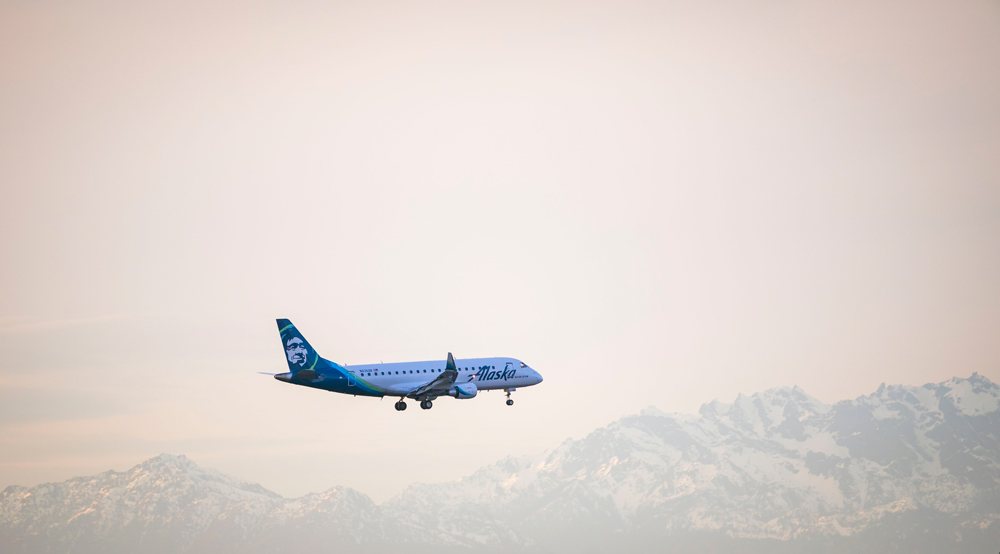Alaska Airlines completes 5G modifications ahead of FAA deadline
Share

June 27, 2023
5G modifications complete ahead of FAA deadline
We’re proud to share that we have completed the modifications to upgrade radio altimeters on all active Alaska and Horizon aircraft in June, ahead of the FAA’s July 1 deadline. It’s an important safety milestone for us and critical to the reliability of our summer operations.
Concerns about 5G’s potential interference with airplane altimeters led to operational disruptions at several airlines last year, including Alaska and Horizon. Following this, the FAA created new rules that prohibit landings in low visibility conditions for aircraft that do not have updated altimeters and will take effect on July 1. Radio altimeters are crucial for landing in adverse weather conditions. Wireless telecommunications carriers agreed to delay the use of C-band signals near major airports, while airlines worked to retrofit aircraft.
“The work to get all aircraft modified with the upgraded radio altimeters was an impressive joint effort between Maintenance & Engineering, Flight Operations, and many others,” said Bret Peyton, managing director of Standards, Fleet & Ops Control, “Thank you to these teams for their attention to safety and speed at which they worked.”
Don Wright, vice president of Maintenance and Engineering, echoed similar sentiment, “The 5G radio altimeter retrofit program was well-coordinated, leading to its flawless execution. It was a total team effort that involved maintenance & engineering, material control, and planning, as well as our business partners. This is a shining example of our ‘One Team Culture’ in action delivering a key initiative for the company.”
Feb 3, 2022
5G rollout continues to disrupt regional air travel, here’s why
As you may have heard in the news, AT&T and Verizon agreed to limit the use of 5G C-Band signals near major airports. This action was essential to avoiding a catastrophic disruption among travelers, shipping and the global supply chain and the U.S. economy.
While we appreciate the efforts of the telecom industry and government agencies to avert the most significant impacts, the rollout of this new 5G band is still creating disruptions for regional air travel.
In a nutshell, the new 5G C-band, when deployed within a certain distance of an airport, interferes with vital flight technology used to navigate aircraft during challenging weather and low visibility. As a result, the Federal Aviation Administration (FAA) issued flight restrictions that limit the ability of some aircraft to land in certain weather conditions.
Since the agreement was reached, Alaska’s Boeing and Airbus aircraft have been cleared for low visibility landings by the FAA. However, some of our regional jets have not yet been cleared at certain airports and are still subject to restrictions on landing/takeoff during low visibility conditions (such as dense fog or winter weather). Until this issue is further analyzed and other solutions are provided this may cause some cancellations, delays and diversions.
Alaska and the aviation industry as a whole has a zero risk mindset and will not fly if there are any concerns with safety. That’s why we have advocated for buffer zones near airports and continue to encourage the telecom industry, FCC and FAA to develop a long-term approach that will allow 5G and aviation to safely co-exist.
To minimize the impact the FAA’s 5G-related restrictions may have on your travel, please follow these tips:
- Always check the status of your flight before leaving for the airport. You can do this online or on the Alaska mobile app.
- If your flight is impacted, manage your travel online.
- We are always here to help. Text 82008 or call 1-800-252-7522 for assistance with your reservation.
We know this situation is frustrating and disruptive to those impacted and we’re asking the government to ensure an effective, safe, reliable and sustainable solution to get all our aircraft back to normal operations.
This post was originally published on Jan. 24, 2022 and updated on Feb. 3, 2022.



